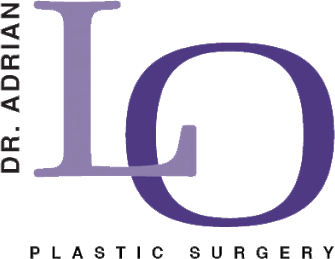Men facing severe gynecomastia or individuals pursuing gender transition often require specialized surgical approaches that go beyond traditional treatments. Subcutaneous mastectomy offers a complete solution that removes breast tissue while preserving skin integrity and chest contours.
This procedure addresses both functional and psychological concerns through advanced surgical techniques. Understanding the process, benefits, and recovery expectations helps patients make informed decisions about their care with Philadelphia plastic surgery specialists.
What Is Subcutaneous Mastectomy?

Definition and Surgical Approach
Subcutaneous mastectomy involves the complete removal of breast tissue while preserving the overlying skin and nipple-areolar complex. The plastic surgeon makes carefully placed incisions to access and remove all glandular breast tissue beneath the skin surface.
This technique requires specialized skill to maintain proper chest contours while ensuring complete tissue removal. The procedure typically takes one to two hours depending on the complexity of each case.
Unlike simple tissue removal, subcutaneous mastectomy focuses on creating masculine chest contours through careful sculpting. The plastic surgeon reshapes the remaining tissue to achieve natural-looking results.
How It Differs From Traditional Mastectomy
Traditional mastectomy removes both breast tissue and overlying skin, often requiring significant reconstruction. Subcutaneous mastectomy preserves the skin envelope, reducing the need for extensive reconstruction procedures.
The skin-sparing mastectomy approach maintains blood supply to the chest area better than traditional methods. This preservation leads to better healing outcomes and fewer complications.
Recovery time is typically shorter with subcutaneous mastectomy compared to traditional approaches. Patients experience less tissue trauma and maintain better chest sensation following the procedure.
Role in Gynecomastia Treatment
Severe gynecomastia cases often require complete tissue removal rather than simple reduction techniques. Subcutaneous mastectomy provides complete gynecomastia treatment for patients with extensive breast development.
The procedure effectively addresses both glandular tissue and excess fat that characterizes advanced gynecomastia. This thorough approach prevents recurrence and creates lasting results.
Men with gynecomastia benefit from the masculine chest contours achieved through this surgical approach. The technique specifically targets the anatomical changes from gynecomastia that cause emotional distress in affected patients.
Why Patients Choose Subcutaneous Mastectomy

Breast Cancer Prevention Benefits
Men with severe gynecomastia face increased risk of developing breast cancer throughout their lifetime. Subcutaneous mastectomy eliminates virtually all breast tissue, significantly reducing this risk.
Family history of breast cancer makes this preventive benefit particularly valuable for male patients. The procedure provides peace of mind while addressing aesthetic concerns at the same time.
Complete tissue removal through subcutaneous mastectomy offers more thorough breast cancer prevention than partial reduction procedures. This complete approach addresses both immediate and long-term health considerations.
Treatment for Severe Gynecomastia Cases
Advanced gynecomastia often involves firm, fibrous tissue that cannot be reduced through liposuction alone. Subcutaneous mastectomy addresses these challenging cases effectively through complete tissue removal.
Patients with grade III or IV gynecomastia typically require this complete surgical approach. The procedure eliminates the enlarged breast tissue while creating appropriate masculine contours.
Long-standing gynecomastia cases benefit from the permanence of complete tissue removal. This approach prevents the recurrence that can occur with less complete treatments.
Gender-Affirming Surgery Requirements
Gender-affirming sexual reassignment surgery often includes subcutaneous mastectomy as a component of chest masculinization. The procedure creates the flat, masculine chest contours desired by transgender men.
The technique addresses both aesthetic and psychological goals of gender transition. Expert plastic surgeons ensure optimal outcomes for patients pursuing this important step.
Transgender patients benefit from the psychological relief that comes with achieving desired chest appearance. This procedure represents a significant milestone in the gender transition process.
How Subcutaneous Mastectomy Works
Skin-Sparing Mastectomy Technique
The skin-sparing mastectomy approach preserves the natural chest skin while removing all underlying breast tissue. Incisions are carefully placed to minimize visible scarring while providing complete access.
Common incision patterns include periareolar approaches that follow the natural nipple border. Some cases require additional incisions depending on the amount of tissue requiring removal.
The plastic surgeon carefully separates breast tissue from the overlying skin and underlying chest muscle. This delicate process preserves blood supply while ensuring complete tissue removal.
Chest Contouring Process
Chest contouring involves reshaping the remaining tissue to create natural masculine contours. The plastic surgeon sculpts the chest area to eliminate feminine curves and enhance masculine definition.
Advanced liposuction techniques may be used to smooth transitions between treated and untreated areas. This technique helps create seamless contours that appear naturally masculine.
The contouring process considers individual anatomy and desired outcomes for each patient. Customized approaches ensure results that complement the patient’s overall physique and goals.
Nipple Reconstruction Options
Nipple reconstruction may be necessary when significant repositioning is required for optimal aesthetics. The plastic surgeon can resize and reposition the nipple/areolar complex to create appropriate masculine proportions.
Some patients benefit from nipple reduction to achieve more masculine appearance. This adjustment complements the overall chest masculinization achieved through tissue removal.
Advanced nipple reconstruction techniques preserve sensation while improving aesthetic outcomes, similar to approaches used in scarless breast implants procedures that minimize visible incision marks.
What to Expect During Recovery

Post-Operative Care Instructions
Post-operative care begins immediately following subcutaneous mastectomy with specialized dressing and compression garment application. Patients receive detailed instructions for wound care, medication management, and activity restrictions.
Compression garments must be worn continuously for the first several weeks to support healing tissues. These specialized garments reduce swelling while helping tissues conform to new chest contours.
Pain management involves non-narcotic medications initially, transitioning to over-the-counter options as healing progresses. Most patients find pain levels manageable with appropriate medication protocols.
Timeline for Healing Milestones
Initial healing occurs within the first two weeks, with most patients returning to light activities. Sutures are typically removed during this period if non-dissolving materials were used.
Significant swelling reduction occurs between weeks two and six following surgery. Patients begin to see their final chest contours emerge during this healing phase.
Complete healing and final results are evident after three to six months. The timeline varies based on individual healing factors and the extent of breast tissue removal required.
Activity Restrictions and Guidelines
Heavy lifting restrictions remain in place for two to four weeks following subcutaneous mastectomy. Patients must avoid activities that strain the chest muscles during initial healing.
Exercise restrictions begin with complete rest for the first week, gradually progressing to light activities. Full exercise clearance typically occurs at four to six weeks post-surgery.
Work restrictions depend on job requirements, with desk work resuming within one to two weeks. Physical jobs may require longer recovery periods before returning to full duties.
Potential Risks and Complications
Surgical Site Infection Possibilities
Surgical site infections can occur following subcutaneous mastectomy, though proper post-operative care significantly reduces this risk. Signs of infection include increased redness, warmth, swelling, or unusual discharge from incision sites.
Antibiotic therapy prescribed for the surgery helps prevent bacterial infections. Patients must follow wound care instructions precisely to maintain clean, dry incision areas during initial healing.
Early detection and treatment of infections ensure optimal healing outcomes. Most infections respond well to antibiotic treatment when identified promptly by the plastic surgeon.
Scarring and Aesthetic Concerns
Visible scarring is not common with subcutaneous mastectomy, as skilled surgical techniques minimize this risk. Incision placement and individual healing factors influence final scar appearance.
Some patients may develop hypertrophic or keloid scars that appear raised or discolored. Scar management protocols including silicone sheets and massage techniques can improve final aesthetic outcomes.
Asymmetry between sides may occur due to individual healing patterns or anatomical differences. Minor revisions can address aesthetic concerns that affect patient satisfaction with results.
Nipple Sensation Changes
Nipple and chest sensation may be altered following subcutaneous mastectomy due to nerve disruption during surgery. Some patients experience temporary or permanent numbness in treated areas.
Sensation typically returns gradually over several months as nerves heal and regenerate. However, some degree of permanent sensation change is rarely possible with extensive tissue removal.
The extent of sensation changes depends on surgical technique and individual anatomy. Patients should discuss sensation expectations with their plastic surgeon during consultation.
Choose Dr. Adrian Lo for Expert Subcutaneous Mastectomy Care
Dr. Adrian Lo provides expert subcutaneous mastectomy procedures for patients seeking complete chest reconstruction. As an award-winning plastic surgeon, his specialized training in advanced surgical techniques delivers natural-looking results that restore confidence and masculine chest contours.
Schedule a consultation to learn how Dr. Lo’s personalized approach to subcutaneous mastectomy can help you achieve your aesthetic and functional goals.
